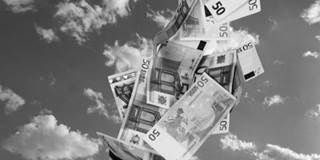Years of low interest rates and quantitative easing have not restored growth to developed countries, and many observers lately have been calling on central banks to inject stimulus into economies directly. But do the rewards of “helicopter money” outweigh the risks?
ZURICH – The world has been on pins and needles since Donald Trump’s upset victory over Hillary Clinton in the United States’ presidential election last week. No one – including, perhaps, the president-elect himself – quite knows what shape the next US administration will take, or what its policy priorities will be.
Compounding this uncertainty is the fact that, around the world, geopolitical tensions are rising, with developed economies continuing to experience tepid growth, even after years of record-low interest rates. For Trump to stimulate enough activity in the US economy to satisfy his zealous base, he will have to find the right balance between fiscal measures and monetary-policy tools.
Whether Trump continues the post-1945 US tradition of international leadership, or instead chooses an “America first” approach, he will not be alone in his quest for growth: Japan and eurozone countries are also struggling to bring about sustainable recoveries and meet central banks’ inflation targets. Project Syndicate commentators have been at the forefront of the ongoing debate about what policymakers can do to achieve these goals. In particular, while Trump and policymakers elsewhere are embracing fiscal activism, how far they are willing or able to go remains uncertain, raising the question of what more central banks could do to stimulate demand and boost growth.

ZURICH – The world has been on pins and needles since Donald Trump’s upset victory over Hillary Clinton in the United States’ presidential election last week. No one – including, perhaps, the president-elect himself – quite knows what shape the next US administration will take, or what its policy priorities will be.
Compounding this uncertainty is the fact that, around the world, geopolitical tensions are rising, with developed economies continuing to experience tepid growth, even after years of record-low interest rates. For Trump to stimulate enough activity in the US economy to satisfy his zealous base, he will have to find the right balance between fiscal measures and monetary-policy tools.
Whether Trump continues the post-1945 US tradition of international leadership, or instead chooses an “America first” approach, he will not be alone in his quest for growth: Japan and eurozone countries are also struggling to bring about sustainable recoveries and meet central banks’ inflation targets. Project Syndicate commentators have been at the forefront of the ongoing debate about what policymakers can do to achieve these goals. In particular, while Trump and policymakers elsewhere are embracing fiscal activism, how far they are willing or able to go remains uncertain, raising the question of what more central banks could do to stimulate demand and boost growth.